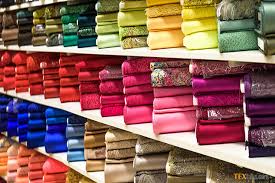Much of the issues that have been haunting the textile sector for some time now have been resolved. These include bringing down the cost of production by granting subsidies in utility prices as well as duty free import for raw materials. The currency depreciation has also taken place even more than what was expected.

These were mostly industry specific issues that needed government intervention. However, now it is the time for firms to do some introspection about how textile exports can be further enhanced. One pressing issue is that of product diversification. What are the products that need to be promoted and result in the maximum value addition? A recently released report titled “Pakistan’s Readymade Garments Sector: Challenges and Opportunities” published jointly by The Pakistan Business Council (PBC) and the Consortium for Development Policy Research (CDPR) seeks to answer this question amongst many others.
The report quotes the example of Bangladesh which promoted value added garment manufacturing which in turn allowed exporters to rack up enough margins for moving up the value chain and undertaking product diversification. There are no two opinions that Pakistan’s exports do indeed have an adaptability problem in a rapidly evolving global consumer landscape.

Using trade data, the authors have categorized the top 20 products in textile exports as either champions or underachievers. Champions are considered to be winners in growing international markets while underachievers are potential winners that are currently losing market share in global markets.
Building on this concept, the hypothesis is that firms should focus on champions in the short term. These are products which have grabbed more market share in international markets in the past five years. While in the medium to long term firms should focus on building up the underachievers which are basically today’s underdogs but tomorrow’s champions.
Worryingly enough, the report highlights that out of the top 40 exports in knitwear and woven apparel segments, almost 28 were in markets that had a declining share in the global markets from 2013-17. Essentially, what this means is that a two-thirds of our top exports are becoming irrelevant in the global markets.
This confirms this column’s observations that unless product diversification takes place, no amount of rebates or incentives by the government can bring about any substantial increase if the product mix is obsolete. Much has also been written in this space about the evolving preferences of global consumers with a shift to man-made and synthetic fibres. This is another area which needs attention by textile exporting firms. (Read: “Textile evolving consumer preferences” published on 24 October, 2017)
As far as the champions are concerned, knitwear is undoubtedly a strong spot for Pakistan exports as evidenced by the trade data for the past five years. The same goes for readymade garments (RMG) where the top woven exports product, men’s or boy’s ensembles of cotton (HS 620322) fetched $1.3 billion in FY17 making Pakistan the number one exporter globally in this product category.
Therefore, for champion products like these, global demand exists. The only thing to do is to maintain consistent quality and competitive pricing to ensure that the market share remains intact. The other category of underachievers will require more effort and a concerted strategy to make any meaningful progress.






















Comments
Comments are closed.